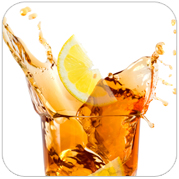The conclusion that cyclamate can be safely consumed has been reached by an increasing number of governments throughout the world. Health and safety organizations, including the World Health Organization's Joint Expert Committee on Food Additives (JECFA) and the European Union Scientific Committee for Food (now the European Food Safety Authority (EFSA), have examined and studied cyclamate over the past 50 years and found it to be safe for use as a general purpose sweetener and as a sweetener in prepared food and beverages. Cyclamate is approved for use in more than 100 countries including Canada, Mexico and Australia. It is used alone, with aspartame, or in blends with other low calorie sweeteners such as aspartame, acesulfame K and/or saccharin.
Cyclamate was synthesized in 1937 by a University of Illinois (U.S.) student by the name of Michael Sveda, who accidentally discovered its sweet taste. The patent for cyclamate was first purchased by Dupont and then later sold to Abbott Laboratories. The health care company's reported interest in those days was to use the product to mask the bitter taste of an antibiotic and a pentobarbital elixir. Abbott performed the necessary studies and submitted a New Drug Application for cyclamate in 1950. Cyclamate was initially marketed as tablets that were recommended for use as a tabletop artificial sweetener for diabetics and others who had to restrict their intake of sugar. In 1958, cyclamate was classified as GRAS (Generally Recognized as Safe) in the U.S.
In 1970, following the results of a controversial study in which rats given extremely high doses of cyclamate and other substances developed bladder tumors, cyclamate was banned in the United States from use in food, beverages and drugs. The rat study, however, has been criticized by a number of scientists, including the study director himself. In addition, dozens of subsequent studies on cyclamate determined it safe for human consumption. In 1984, for example, the Cancer Assessment Committee of the U.S. Food and Drug Administration (FDA) concluded that cyclamate is not carcinogenic. This finding was confirmed in 1985 in an independent evaluation of the report by the U.S. National Academy of Sciences. A number of agencies across the globe including the Food and Agriculture Organization/World Health Organization's Joint Expert Committee on Food Additives (JECFA), the Scientific Committee on Food (SCF) of the European Commission and food safety authorities in Mexico have also analyzed cyclamate and approved it for use in a wide range of food products and beverages. The Acceptable Daily Intake (ADI) for cyclamate has been set at 11 mg/kg body weight by JECFA and at 7 mg/kg body weight by the SCF.
A petition shared by the Calorie Control Council and Abbott Laboratories for the reapproval of cyclamate in the United States has been submitted to the FDA. The petition seeks reapproval primarily in light of three sets of facts: 1) scientists from the American Statistical Association and the Society of Toxicology have called upon the FDA to reassess the statistical and scientific principles relied upon in its 1980 decision not to reapprove cyclamate; 2) new scientific evidence, including some 75 new studies, demonstrates the safety of cyclamate for human use as a sugar substitute and assists in determining safe consumption levels; and 3) JECFA has determined human cyclamate use is safe in its 1978, 1980 and 1982 reports, and has found sufficient data to establish a safe human consumption level.
A favorable decision would provide for a greater variety of low-calorie and sugar-free foods and beverages to help meet consumer demand.




